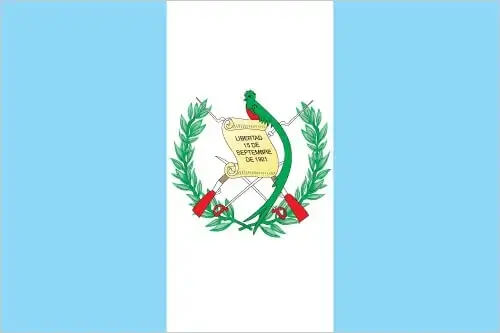World Book
Guatemala
World Book Index
64


With a score of 64, the country is ranked 91st out of 158 countries in the World Book ranking. (more information)
Introduction
Background
The Maya civilization flourished in Guatemala and surrounding regions during the first millennium A.D. After almost three centuries as a Spanish colony, Guatemala won its independence in 1821. During the second half of the 20th century, it experienced a variety of military and civilian governments, as well as a 36-year guerrilla war that ended in 1996.
Geography
Area
total : 108,889 sq km
land: 107,159 sq km
water: 1,730 sq km
Climate
tropical; hot, humid in lowlands; cooler in highlands
Natural resources
petroleum, nickel, rare woods, fish, chicle, hydropower
People and Society
Population
total: 18,255,216 (2024 est.)
Ethnic groups
Mestizo (mixed Indigenous-Spanish - in local Spanish called Ladino) 56%, Maya 41.7%, Xinca (Indigenous, non-Maya) 1.8%, African descent 0.2%, Garifuna (mixed West and Central African, Island Carib, and Arawak) 0.1%, foreign 0.2% (2018 est.)
Languages
Spanish (official) 69.9%, Maya languages 29.7% (Q'eqchi' 8.3%, K'iche 7.8%, Mam 4.4%, Kaqchikel 3%, Q'anjob'al 1.2%, Poqomchi' 1%, other 4%), other 0.4% (includes Xinca and Garifuna) (2018 est.)
Religions
Evangelical 45.7%, Roman Catholic 42.4%, none 11%, unspecified 0.9% (2023 est.)
Population growth rate
1.49% (2024 est.)
Government
Government type
presidential republic
Capital
name: Guatemala City
Executive branch
chief of state: President Bernardo ARÉVALO de León (since 15 January 2024)
head of government: President Bernardo ARÉVALO de León (since 15 January 2024)
Diplomatic representation in the US
chief of mission: Ambassador Hugo Eduardo BETETA (since 17 June 2024)
Diplomatic representation from the US
chief of mission: Ambassador Tobin BRADLEY (since 12 February 2024)
Economy
Economic overview
developing Central American economy; steady economic growth fueled by remittances; high poverty and income inequality; limited government services, lack of employment opportunities, and frequent natural disasters impede human development efforts and drive emigration
Real GDP (purchasing power parity)
$232.673 billion (2024 est.)
$224.475 billion (2023 est.)
$216.815 billion (2022 est.)
Real GDP per capita
$12,600 (2024 est.)
$12,400 (2023 est.)
$12,100 (2022 est.)
Exports
$17.997 billion (2024 est.)
$17.342 billion (2023 est.)
$18.141 billion (2022 est.)
Exports - partners
USA 33%, El Salvador 11%, Honduras 9%, Nicaragua 6%, Mexico 4% (2023)
Exports - commodities
garments, bananas, coffee, palm oil, raw sugar (2023)
Imports
$35.576 billion (2024 est.)
$33.056 billion (2023 est.)
$33.943 billion (2022 est.)
Imports - partners
USA 30%, China 19%, Mexico 11%, El Salvador 4%, Costa Rica 3% (2023)
Imports - commodities
refined petroleum, video displays, cars, trucks, packaged medicine (2023)
Human Development Index
The country's Human Development Index (HDI) is 0.662, ranking it 137th out of 193 countries tested. (more information)
World Happiness Report
The World Happiness Report ranked the country 52th out of 158 countries tested with a score of 6.188. (more information)



